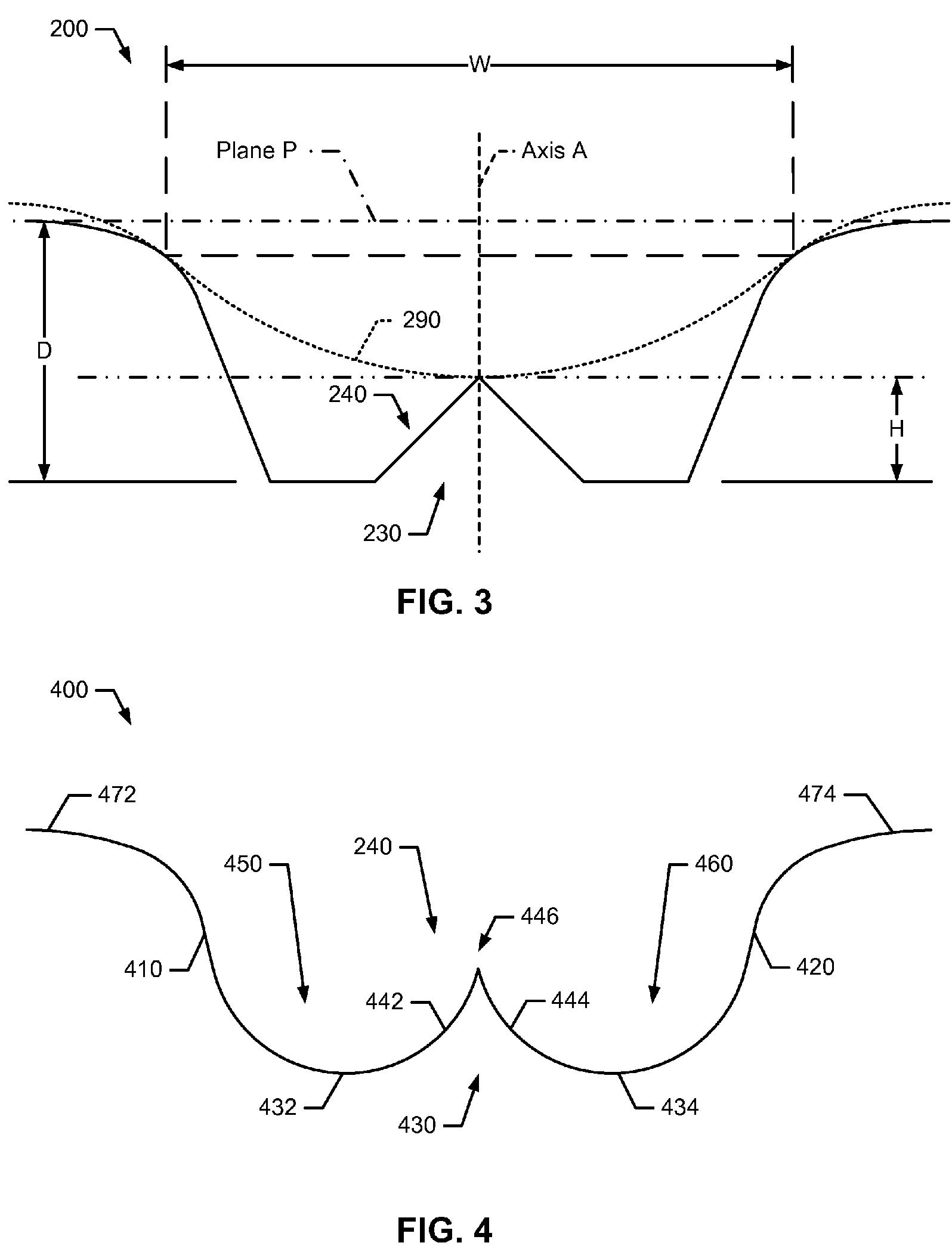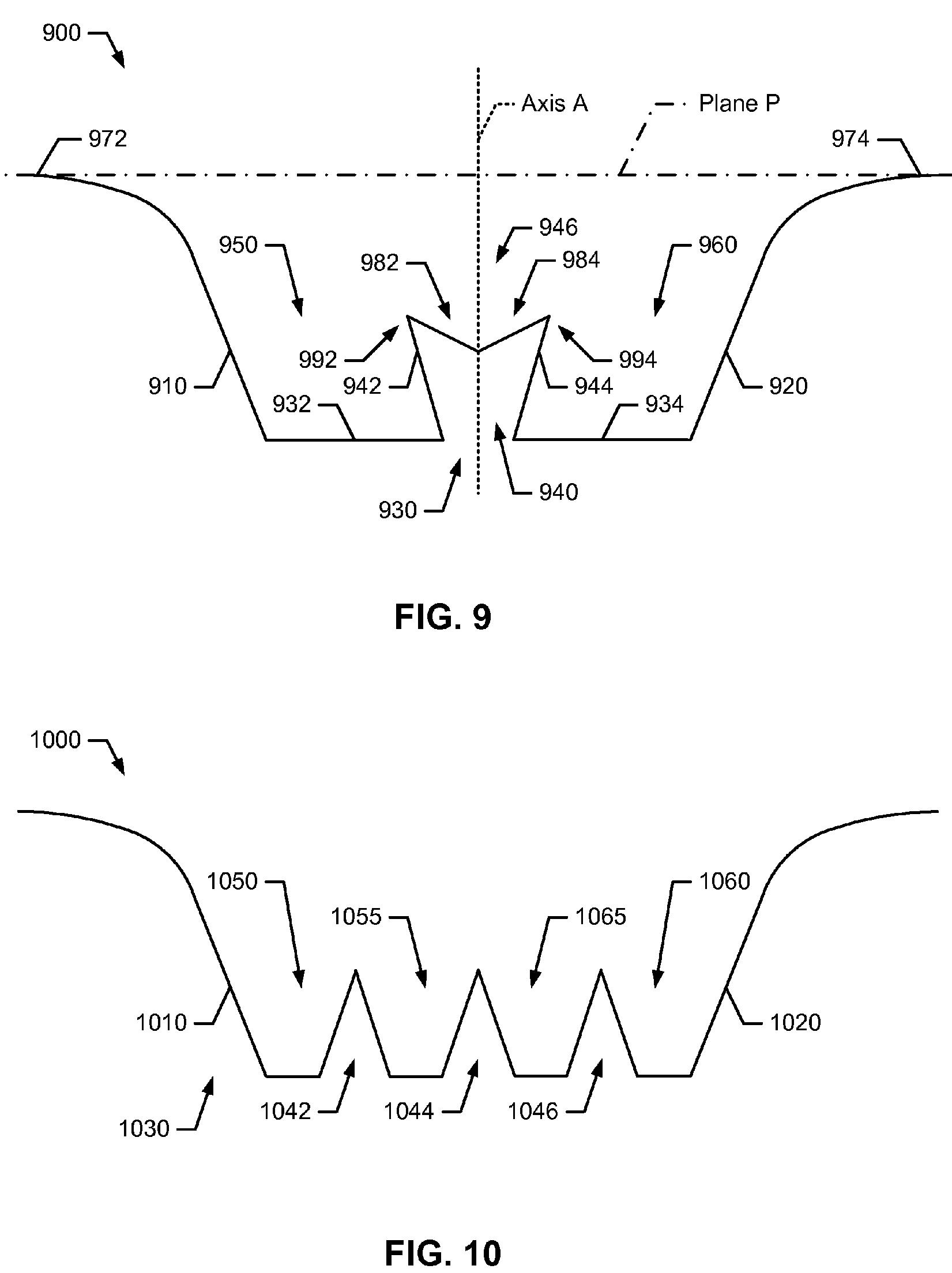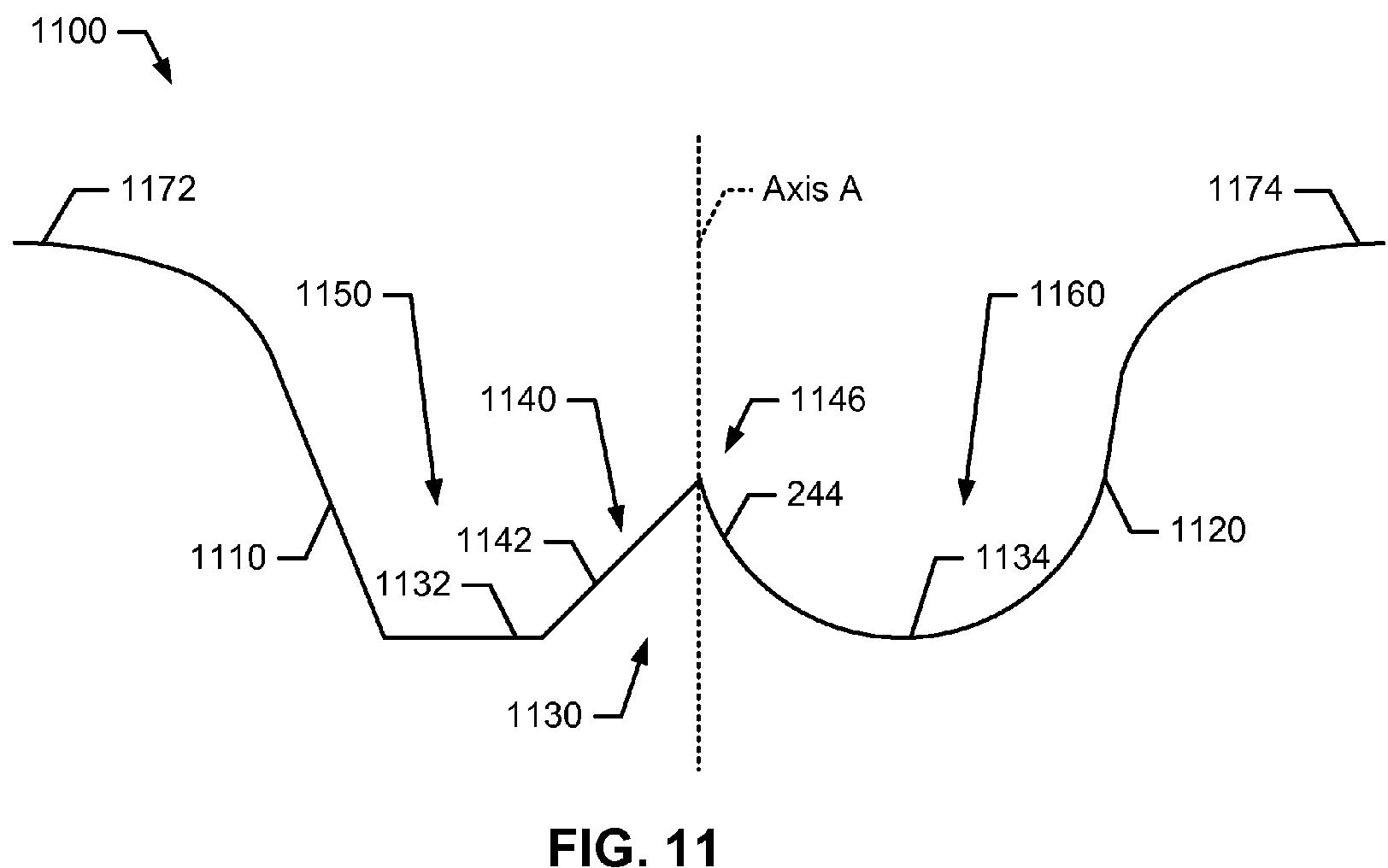Grooves of the Future?
Grooves, grooves, grooves…. they have definitely been a hot topic for
the past year at the USGA, which by default means they have been a
topic for the club makers! Therefore, it should be no surprise that we
are starting to see some interesting groove related inventions.
Karsten (aka PING) has come up with a rather interesting groove related invention disclosed in a patent application that published today. The application published as US Pub. No. 20090011852 with the title “Grooves with Multiple Channels and Methods to Manufacture Grooves of a Golf Club Head.” Check out these groove designs:




The application describes the benefit of these designs as:
Bet you never thought you would see grooves like that!
Dave Dawsey - Monitoring Golf Club Groove Inventions
PS – check out other golf iron invention posts HERE
Karsten (aka PING) has come up with a rather interesting groove related invention disclosed in a patent application that published today. The application published as US Pub. No. 20090011852 with the title “Grooves with Multiple Channels and Methods to Manufacture Grooves of a Golf Club Head.” Check out these groove designs:




The application describes the benefit of these designs as:
The groove 200 may increase backspin and improve consistency in a variety of playing conditions. In wet, sand, and/or grassy lie conditions, for example, the first and second channels 250 and 260 of the groove 200 may clear out water, sand, grass, and/or other debris between a golf ball 290 and the club face 110 before, during, and/or after impact on the club face 110 by the golf ball 290. In contrast to other types of grooves, the protruded portion 240 of the groove 200 may provide more grip on the golf ball 290 while preventing portions of the golf ball 290 from reaching the bottom 230 of the groove 200. Accordingly, the groove 200 may impart more spin on the golf ball 290 relative to other groove configurations (e.g., V-shaped grooves) because the groove 200 may be in contact with more surface area of the golf ball 290 via the protruded portion 240 while evacuating water, sand, grass, and/or other debris between the golf ball 290 and the club face 110 via the first and second channels 250 and 260. The apparatus, methods, and articles of manufacture described herein are not limited in this regard.
Bet you never thought you would see grooves like that!
Dave Dawsey - Monitoring Golf Club Groove Inventions
PS – check out other golf iron invention posts HERE

Comments